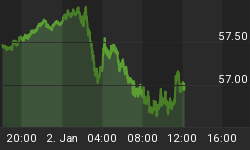The financial condition of the United States is irreversible. The liabilities of Social Security, Medicare and Medicaid (See Figure 1), along with an annual budget deficit that adds $1.5 trillion of additional debt per year, equate to an insolvent government. Markets do not reflect the fact that the government is insolvent because most investors and asset managers believe that a funding crisis can be avoided because of the Federal Reserve's ability to print enough money. Printing money enables the Federal Reserve to monetize government debt, which allows the government to avoid defaulting on its debt. Before the $600 billion of quantitative easing (QE2) was implemented last fall, it may have seemed reasonable for the Federal Reserve to engage in continuous quantitative easing. However, the surge in commodity prices and declines in the Dollar and Treasury prices have created unintended consequences, which make future quantitative easing unlikely and perhaps even impossible. Regardless of the various unintended market and geopolitical responses to QE2, the sum of the government's liabilities dwarfs any estimation of the Federal Reserve's capacity to expand its own balance sheet.
Figure 1. USA Balance Sheet Liabilities
Source: Pimco
The unintended consequences of the Federal Reserve's quantitative easing program are creating significant problems. While the Fed is buying $600 billion of Treasuries, just 40% of the government's $1.5 trillion deficit this year, speculators have taken their cue from this loose monetary policy and driven nearly all asset prices higher and, in some cases such as agricultural commodities and precious metals, hyperbolically higher. Rising commodity prices (e.g., cotton tripling, coffee doubling, and oil surging to over $110 per barrel) have led, in part, to social unrest in the Middle East, food riots throughout Asia, and war in Libya. Additionally, Treasury prices have been falling despite the Federal Reserve's purchases and the Dollar has been in freefall. While there may be some perceived benefits to quantitative easing, the negative consequences will ultimately limit further expansion of quantitative easing.
In theory, the Federal Reserve can expand its balance sheet indefinitely if markets cooperate. However, in practicality, the Federal Reserve's balance sheet is too small compared to the size of the government's liabilities. Shown in Figure 2, the Federal Reserve has transformed its balance sheet by doubling its holdings of Treasuries with the purchase of just $600 billion. Yet, as Figure 1 clearly depicts, if the Federal Reserve doubled or even tripled its current holdings, the purchases would pale in comparison to the government's debts.
Figure 2. Asset Side Of Federal Reserve Balance Sheet
Source: Federal Reserve
Investors are currently embracing risk because of the Federal Reserve's quantitative easing policy. However, there is a limit to what the Fed can do in light of the government's indebtedness. Eventually, markets will recognize the severity of the government's situation and there will be nothing that the Fed can do.
















